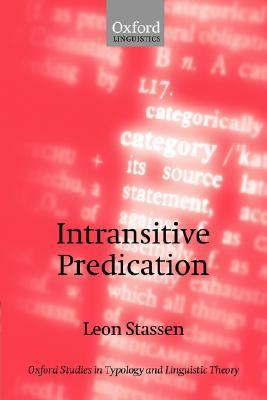

Most ebook files are in PDF format, so you can easily read them using various software such as Foxit Reader or directly on the Google Chrome browser.
Some ebook files are released by publishers in other formats such as .awz, .mobi, .epub, .fb2, etc. You may need to install specific software to read these formats on mobile/PC, such as Calibre.
Please read the tutorial at this link. https://ebooknice.com/page/post?id=faq
We offer FREE conversion to the popular formats you request; however, this may take some time. Therefore, right after payment, please email us, and we will try to provide the service as quickly as possible.
For some exceptional file formats or broken links (if any), please refrain from opening any disputes. Instead, email us first, and we will try to assist within a maximum of 6 hours.
EbookNice Team

Status:
Available0.0
0 reviews(Ebook) Intransitive Predication 1st Edition by Leon Stassen - Ebook PDF Instant Download/Delivery: 9780199258932 ,0199258937
Full download (Ebook) Intransitive Predication 1st Edition after payment

Product details:
ISBN 10: 0199258937
ISBN 13: 9780199258932
Author: Leon Stassen
(Ebook) Intransitive Predication 1st Edition Table of contents:
Part I. The Typology of Predicative Possession
1 The domain of the inquiry
1.1 Introduction
1.2 Previous work
1.3 The semantics of possession: two parameters
1.4 The cognitive space of possession: subdomains
1.5 Formal restrictions on the domain
1.6 The definition of the domain
1.7 The sample
1.8 Outline of this book
2 Four basic types of predicative possession
2.1 Methodological issues
2.2 The definition of the criterion
2.3 The Locational Possessive
2.4 The With-Possessive
2.5 The Topic Possessive
2.6 The Have-Possessive
2.7 Conclusion
3 Non-standard variants
3.1 Introduction
3.2 Possessor indexing on the possessee
3.3 Zero-encoding
3.4 Conjunctional Possessives
3.5 Clausal Possessives
3.6 Topic-Locational hybrids
4 Adnominalization
4.1 Introduction
4.2 Constituency in the Adnominal Possessive
4.3 The origin of genitival markers
4.4 Conclusion
5 Predicativization
5.1 Introduction
5.2 Predicativization of With-Possessives
5.3 Predicativization of other types?
6 Transitivization
6.1 Introduction
6.2 Have-Drift from With-Possessives
6.3 Have-Drift from Topic Possessives
6.4 Have-Drift from Locational Possessives
6.5 Why Have-Drift?
7 Summary of Part I
7.1 Basic features of the typology
7.2 Areal distribution of the types
Part II. Determinant Factors
8 In search of determinant factors
8.1 Introduction
8.2 Temporal sequencing
8.3 Nonverbal predication: the split/share parameter
8.4 The universals of predicative possession encoding
9 Locational Possessives
9.1 Introduction
9.2 Indo-European
9.3 Languages of the Caucasus
9.4 Uralic
9.5 Altaic
9.6 Other languages of Siberia
9.7 Munda and Dravidian
9.8 Tibeto-Burman
9.9 Middle East and North Africa
9.10 Other African languages
9.11 Indian and Pacific Ocean
9.12 North and Central America
9.13 South America
9.14 Conclusion
10 With-Possessives
10.1 Introduction
10.2 North-east Siberia
10.3 North America
10.4 Central America
10.5 South America
10.6 Austronesian and Papuan
10.7 Australia
10.8 Africa
10.9 Austro-Asiatic
10.10 Conclusion
11 Topic Possessives
11.1 Introduction
11.2 East and south-east Asia
11.3 Austronesian
11.4 New Guinea and Northern Australia
11.5 North America
11.6 Central America
11.7 South America
11.8 African languages
11.9 Conclusion
12 Have-Possessives
12.1 Introduction
12.2 Indo-European
12.3 Further Eurasia
12.4 Austronesian and Papuan
12.5 Australian
12.6 North America
12.7 Central America
12.8 South America
12.9 Khoisan
12.10 Afro-Asiatic
12.11 Nilo-Saharan
12.12 Niger-Kordofanian
12.13 Creoles
12.14 Conclusion
Part III. A Model of Predicative Possession Encoding
13 A model of predicative possession encoding
13.1 Introduction
13.2 Preliminaries
13.3 The underlying structure of predicative possession
13.4 Deranking languages
13.5 Balancing languages
13.6 Potential ambiguity and the Have-Possessive
13.7 Conclusion
Appendix A: Alphabetical listing of the sample
Appendix B: Typological stratification of the sample
References
Index of Languages
People also search for (Ebook) Intransitive Predication 1st Edition:
intransitive verb of incomplete predication example
difference between transitive and intransitive
difference between intransitive verb and verb of incomplete predication
intransitive preferences
intransitive preferences example
Tags: Leon Stassen, Intransitive Predication